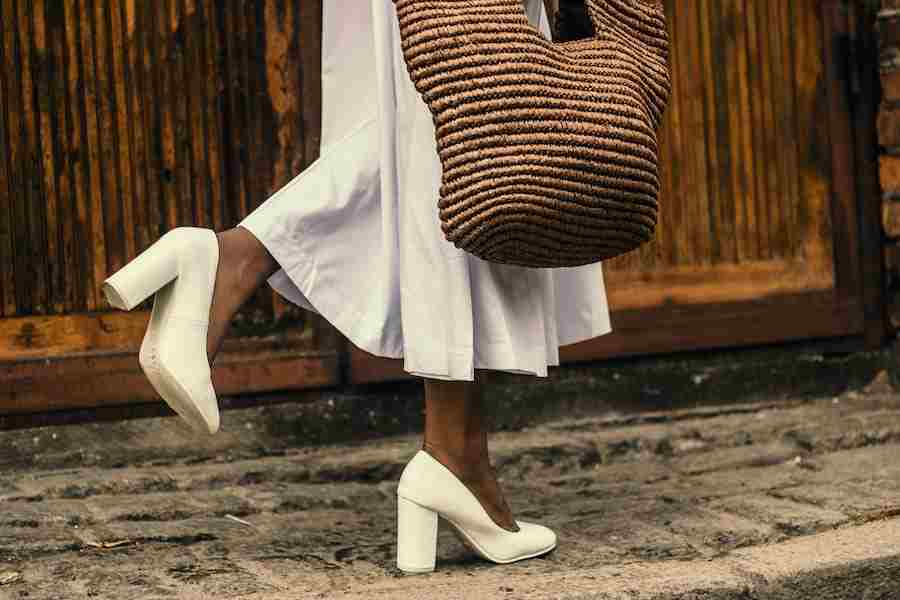Are you tired of experiencing numbness in your toes every time you wear heels? Don’t fret, because, in this blog post, we will unravel the mystery behind why your toes go numb when you slip into those stylish stilettos. Understanding the reasons behind this pesky issue is the first step toward finding a solution. Whether you’re a fashion enthusiast or simply someone who enjoys a night out in heels, we’ve got you covered. Join us as we delve into the world of high heels and explore practical tips to prevent toe numbness, ensuring a more comfortable and enjoyable experience. Say goodbye to numb toes and hello to confident strides in your favorite heels!
Why Are My Toes Numb After Wearing Heels?
Numbness in the toes after wearing heels can be caused by various factors, including compression, pinched nerves, restricted blood circulation, and tight-fitting shoes. Compression in high-heeled shoes can restrict blood flow to the toes, while pinched nerves can be compressed or pinched due to altered foot position. Additionally, prolonged wear can impede proper blood flow to the toes due to the tight-fitting nature of heels and elevated heels, constricting blood vessels and causing numbness.
Exploring Feet Structure And High Heels Mechanics
Understanding the intricate anatomy of feet and the mechanics of high heels can provide valuable insights into the effects of wearing these stylish yet often uncomfortable shoes. Feet are marvelously complex structures composed of bones, muscles, tendons, ligaments, and nerves, all working together to provide stability, support, and mobility. Each foot contains 26 bones, 33 joints, and over 100 muscles, tendons, and ligaments, making it a remarkable foundation for the body.
When it comes to high heels, the dynamics of foot mechanics undergo significant changes. The elevated heel alters the natural alignment of the foot, placing increased pressure on specific areas. The weight distribution shifts toward the ball of the foot and the toes, leading to increased stress on the metatarsal bones and the plantar fascia, the fibrous band of tissue that supports the arch. This shift can result in discomfort, pain, and the development of conditions such as “metatarsalgia” and plantar fasciitis.
Furthermore, wearing high heels affects the walking gait and posture. The elevated heel causes a forward tilt of the pelvis, which results in a more pronounced arch in the lower back. This adjustment alters the alignment of the spine, potentially leading to lower back pain and postural imbalances. The calf muscles also experience increased tension due to the shortened position they are held in while wearing high heels.
Additionally, the narrower toe box in high-heeled shoes can compress the toes, leading to issues like bunions, corns, and ingrown toenails. The stability of the ankle joint may also be compromised due to the reduced contact area between the foot and the ground, making wearers more susceptible to ankle sprains and instability.
To mitigate the negative effects of high heels, it is crucial to choose shoes that provide proper support and cushioning. Opting for heels with a wider base can help distribute weight more evenly and reduce the strain on specific areas of the foot. Incorporating regular stretching exercises for the calf muscles and feet can help maintain flexibility and prevent tightness. Alternating between high heels and flats throughout the day or opting for lower-heeled shoes can also provide relief and reduce the risk of long-term foot problems.
Possible Causes Of Toe Numbness In Heels
- Nerve Compression: One of the primary reasons for numbness in the toes after wearing heels is nerve compression. Prolonged pressure on the nerves in the forefoot can impede their proper function, leading to a tingling or numb sensation. The nerves most commonly affected are the digital nerves that run along the toes.
- Reduced Blood Circulation: Another factor that can contribute to numbness is reduced blood circulation. When wearing high heels, the tight fit and unnatural posture can constrict blood vessels, impairing the flow of oxygen and nutrients to the toes. This lack of adequate blood supply can result in numbness or a pins-and-needles sensation.
- Metatarsalgia: Metatarsalgia refers to pain and inflammation in the ball of the foot, usually affecting the area beneath the toes. Wearing high heels can exacerbate this condition, causing additional pressure on the metatarsal heads and potentially leading to numbness or discomfort in the toes.
- Neuromas: Neuromas are benign growths of nerve tissue, commonly occurring between the third and fourth toes. The constriction and compression caused by high heels can irritate these nerves, leading to numbness, pain, or a burning sensation in the affected area.
Tips To Prevent Toe Numbness In Heels
While complete avoidance of high heels may not be necessary, there are several measures you can take to reduce the likelihood of experiencing toe numbness after wearing them. Here are some practical tips to consider:
Choose the Right Shoe Size
Ensure that your high heels fit properly and are not too tight. Ill-fitting shoes can increase pressure on the toes, compress nerves, and restrict blood circulation. Consider consulting a professional shoe fitter to find the right size and style that provides ample toe room and arch support.
Opt for Lower Heel Heights
High heels come in various heights, so consider opting for lower heels to minimize the strain on your feet. Lower heels distribute the body weight more evenly and reduce the pressure on the forefoot, potentially reducing the risk of toe numbness.
Gradually Increase Heel Height
If you’re not accustomed to wearing high heels, it’s advisable to gradually increase the height over time. This allows your feet to adapt and build up strength, minimizing the strain on the toes and reducing the likelihood of numbness.
Use Cushioning and Inserts
To alleviate pressure on the ball of the foot, consider using cushioning pads or inserts. These can provide additional support and reduce the impact on the metatarsal heads, potentially preventing toe numbness.
Take Regular Breaks and Stretch
If you need to wear heels for an extended period, make sure to take regular breaks. Take off your shoes, stretch your feet, and perform simple exercises to improve blood circulation. Flexing your toes, rolling a tennis ball under your foot, or massaging your feet can all help relieve tension and prevent numbness.
Strengthen Your Foot Muscles
Engaging in foot-strengthening exercises can improve the overall stability and support of your feet. Exercises such as toe curls, marble pickups, and ankle rotations can help enhance muscle tone and prevent discomfort or numbness.
Conclusion
Wearing high heels can be a glamorous and empowering choice, but it’s essential to be aware of the potential side effects they can bring, such as toe numbness. By understanding the mechanics behind this issue and implementing preventive measures, you can enjoy the beauty of high heels without sacrificing your foot comfort. Remember to choose the right shoe size, opt for lower heel heights, and take breaks to stretch and strengthen your feet. By following these guidelines, you can minimize the risk of toe numbness and stride confidently in your favorite pair of heels. So, if you’re wondering, “Why are my toes numb after wearing heels?” now you have the answers and solutions to address this common concern. Embrace the elegance of high heels while prioritizing your foot health and comfort.










